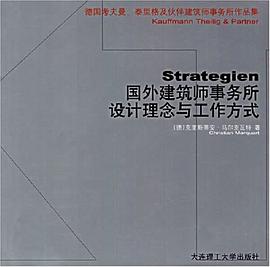
The idea of writing this book originated from our observation that some of the most fundamental concepts and methods related to performance modeling and analysis are largely unknown to most Information Technology (IT) practitioners. As a result, many IT systems are designed and built without sufficient consideration given to their non-functional requirements such as performance, availability, and reliability. More often than not, performance is an afterthought. Performance testing is done when a system is nearing completion. At that late stage, it may be necessary to conduct a major redesign to correct eventual performance problems. This approach is inefficient, expensive, time consuming, and professionally irresponsible.
A major goal of this book is to provide to those involved in designing and building computer systems a performance engineering framework to be applied throughout a computer system's life cycle. This framework is quantitative, rigorous, and based on the theory of queuing networks. Some of our readers may not be interested in the details behind the models. For that reason, we divided the book into two parts: the practice of performance engineering (Part I) and the theory of performance engineering (Part II).
Part I brings many examples and case studies supported by algorithms implemented in Visual Basic modules attached to the various MS Excel workbooks provided with the book. Five complete case studies are inspired in real-world problems: a database service sizing, a Web service capacity planning situation, a data center's cost and availability analysis, the sizing of an e-business service, and the performance engineering of a future help desk application. After reading Part I, the reader should be able to 1) identify the sources of potential performance problems of a computer system and 2) build and solve performance models to answer what-if questions regarding competing hardware and software alternatives. The models that you build can be solved with the tools provided with the book.
Part II presents the theory of performance engineering in an intuitive, example-driven manner. Before the algorithms and methods are formalized, the basic ideas are derived from first principles applied to examples. The readers of part II are exposed to the most important techniques for solving 1) Markov models, 2) open and closed multiclass queuing networks using exact and approximate methods, and 3) non-product form queuing networks that represent software contention, blocking, high service time variability, priority scheduling, and fork and join systems.
Throughout Part I, references to specific techniques and methods of Part II provide a nice integration between the two components of this text.
Who Should Read This Book
Information technology professionals must ensure that the systems under their management provide an acceptable quality of service to their users. Managers must avoid the pitfalls of inadequate capacity and meet users' performance expectations in a cost-effective manner. Performance engineers, system administrators, software engineers, network administrators, capacity planners and analysts, managers, consultants, and other IT professionals will benefit from reading parts or the entire book. Its practical, yet sound and formal, approach provides the basis for understanding modern and complex networked environments.
This book can also be used as a textbook for senior undergraduate and graduate courses in Computer Science and Computer Engineering. Exercises are provided at the end of all fifteen chapters. At the undergraduate level, the book is a good starting point to motivate students to learn the important implications and solutions to performance problems. An undergraduate course would concentrate on the first part of the book, i.e., the practice of performance engineering. At the graduate level, it can be used in System Performance Evaluation courses. This book offers a theoretical and practical foundation in performance modeling. The book can also be used as a supplement for systems courses, including Operating Systems, Distributed Systems, and Networking, both at the undergraduate and graduate levels.
Book Organization Part I: The Practice of Performance Engineering
Chapter 1 introduces several properties and metrics used to assess the quality of IT systems. Such metrics include response time, throughput, availability, reliability, security, scalability, and extensibility. The chapter also discusses the various phases of the life cycle of a computer system and shows the importance of addressing QoS issues early on in the design stage as opposed to after the system is deployed.
Chapter 2 presents the qualitative aspects of the performance engineering framework used in this book. The framework is based on queuing networks. The chapter uses examples of practical systems to introduce the various aspects of such queuing networks.
Chapter 3 focuses on the quantitative aspects of the queuing network framework and introduces the input parameters and performance metrics that can be obtained from these models. The notions of service times, arrival rates, service demands, utilization, queue lengths, response time, throughput, and waiting time are discussed. The chapter also introduces Operational Analysis, a set of basic quantitative relationships between performance quantities.
Chapter 4 presents a practical performance engineering methodology and describes its steps: specification of the system's performance goals, understanding the current environment, characterization of the workload, development of a performance model, validation of the performance and workload models, workload forecasting, and cost × performance analysis of competing alternatives.
Chapter 5 uses a complete case study of a database service sizing to introduce the issue of obtaining input parameters to performance models from measurement data. The chapter also discusses various types of software monitors and their use in the data collection process.
Chapter 6 uses a Web server capacity planning case study to introduce several important concepts in performance engineering, including the determination of confidence intervals, the computation of service demands from the results of experiments, the use of linear regression, and comparison of alternatives through analytic modeling and through experimentation.
Chapter 7 applies performance modeling techniques to address the issue of properly sizing a data center. This sizing is part of the system design process and focuses on the number of machines and the number and skill level of maintenance personnel to achieve desired levels of availability.
Chapter 8 shows, through an online auction site case study, how performance models are used to analyze the scalability of multi-tiered e-business services. The workload of these services is characterized at the user level. User models are used to characterize the way customers navigate through the various e-business functions during a typical visit to an e-commerce site. This user-level characterization is mapped to a request-level characterization used by queuing network models. The models are u...
具体描述
读后感
评分
评分
评分
评分
用户评价
太过理论,不是很好懂
评分太过理论,不是很好懂
评分太过理论,不是很好懂
评分太过理论,不是很好懂
评分太过理论,不是很好懂
相关图书
本站所有内容均为互联网搜索引擎提供的公开搜索信息,本站不存储任何数据与内容,任何内容与数据均与本站无关,如有需要请联系相关搜索引擎包括但不限于百度,google,bing,sogou 等
© 2025 qciss.net All Rights Reserved. 小哈图书下载中心 版权所有





















